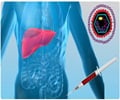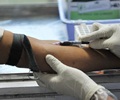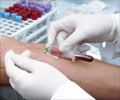UC Davis researchers have found that lay health workers increased screening rates for hepatitis B virus (HBV) and knowledge about the disease among a group of Asian Americans, known as the Hmong.

Although Hmong Americans often have health insurance, cultural and language barriers can prevent access to adequate screening for hepatitis B and liver cancer, according to study author Moon Chen Jr., professor and associate director for cancer control at UC Davis, who led the research effort.
"Compared to other Asian Americans, liver cancer tends to be found at a later stage among the Hmong, and the survival rate is very low. While the overall survival rate for liver cancer is 10 percent, Hmong people who are diagnosed with the disease usually live for less than a year, and often for as little as a month or two," said Chen.
"We wanted to decrease the probability of earlier death from liver cancer among the Hmong and increase the probability of earlier detection," said Chen, who is also principal investigator for the Asian American Network for Cancer Awareness Research and Training (AANCART), the National Cancer Institute's National Center for Reducing Asian American Cancer Health Disparities.
In the study, 260 Hmong residents of Sacramento were randomly assigned to two groups. One group received home-based health education about hepatitis B and liver cancer during two visits from workers fluent in Hmong and knowledgeable about the Hmong culture. A second group learned about healthy nutrition and physical activity. The lay health-care workers also assessed participants' knowledge of hepatitis B and liver cancer during their first home visit.
Six months later, study leaders followed up to determine how many participants got HBV screenings and to assess their HBV knowledge.Twenty-four percent of Hmong subjects who learned about hepatitis B and liver cancer were later screened for HBV compared to only 10 percent of those who learned about healthy nutrition and physical activity. Hmong subjects who learned about hepatitis B and liver cancer also were more likely to show significantly greater knowledge about HBV than the control group.
By using lay educators familiar with both the Hmong culture and language, and training them about hepatitis B and liver cancer, the UC Davis researchers overcame obstacles to HBV screening among the Hmong, Chen said. The health workers were recruited from two respected organizations in the Hmong Sacramento community, the Hmong Women's Heritage Association and the Hmong Cultural Council of Butte County, which increased the probability that the educators would be welcomed into the homes of the Hmong, said Dao Fang, project manager for the UC Davis study.
Although the health-care worker visits boosted screening rates for hepatitis B among the Hmong, use of this approach as an outreach tool would require an intensive effort, Chen acknowledged. Another effective way to increase the screening rates for HBV among the Hmong would be to work with health-care providers to encourage them to suggest HBV screenings to their Hmong patients, he noted.
In the UC Davis study, having visited a doctor within the last year or having a doctor suggest hepatitis B screening was a strong predictor of a patient getting screened.
"In this and previous studies we have found that one of the most influential factors in predicting getting screened for HBV is the recommendation of a health-care provider," Chen said.
Source-Eurekalert
 MEDINDIA
MEDINDIA




 Email
Email










